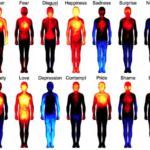We feel it’s time to take a look at something that, though in the news, does not seem to be hitting home with the public as it should be: the current drug addiction epidemic in the US.
Epidemic is a big word, with portentous meaning. When we hear this word, it sets off alarm bells deep within our consciousness, causing fear and trepidation. Unfortunately, by the nature of mass media today, we’ve also become extremely skeptical of such claims – the media have cried wolf too many times – and our capacity for caring and empathy are limited. If it doesn’t affect us directly, we may not take the time to listen to the warnings and learn what’s really going on.
While normally used when referring to infectious diseases, and rightly so, the relatively sudden and widespread outbreak of opioid use in the US may actually fit the “epidemic” model more clearly than other outbreaks in recent memory. In fact, based on the current numbers, it’s getting scary out there.
Folks, this is not a political issue, nor is it something you can easily ignore because, “It isn’t happening to me”. Over the next decade, deaths from opioid overdose alone could kill the equivalent of a medium-sized US town, while drugs in general could wipe out the equivalent population of a city like Baltimore.
The Opioid Epidemic: Is it real?
According to the New York Times, yes. New data compiled from hundreds of health agencies reveals the extent of the drug overdose epidemic last year. Drug overdose deaths in 2016 most likely exceeded 59,000, the largest annual jump ever recorded in the United States, according to preliminary data compiled by The New York Times.
And, from DrugRehab.com, “The opioid epidemic has devastated communities and lives across the country, causing more than 200,000 deadly overdoses. It’s easy to point fingers, and there are plenty of places to point. But the epidemic didn’t begin with greedy drug companies or reckless prescribers. It began with compassionate doctors trying to end the suffering of millions of people in pain.”
Again, the NYT said this, “It’s the deadliest drug crisis in American history. Drug overdoses are the leading cause of death for Americans under 50, and deaths are rising faster than ever, primarily because of opioids. Overdoses killed more people last year than guns or car accidents, and are doing so at a pace faster than the H.I.V. epidemic at its peak. In 2015, roughly 2 percent of deaths — one in 50 — in the United States were drug-related.”
How America’s opioid epidemic began
From Vox.com (considered by many to be a far-left political site):
“The opioid epidemic began in the 1990s, when doctors became increasingly aware of the burdens of chronic pain. Pharmaceutical companies saw an opportunity, and pushed doctors … to prescribe opioids to treat all sorts of pain. Doctors, many exhausted by dealing with difficult-to-treat pain patients, complied — in some states, writing enough prescriptions to fill a bottle of pills for each resident. The drugs proliferated, making America the world’s leader in opioid prescriptions.”
From PBS.org, “The majority of overdoses now stem from prescription opioids and heroin, according to data from the Centers for Disease Control and Prevention. That wasn’t always the case. In 1999, cocaine killed about twice as many people as heroin — 3,822 and 1,960 deaths, respectively — while opioids killed 4,030. By 2014, opioid deaths were up 369 percent, while deaths from heroin jumped 439 percent, according to CDC data. That same year, cocaine deaths dropped below those caused by benzodiazepines, a class of drugs often used in sleeping pills or to combat anxiety.”

More Information About Addiction
There are a multitude of sites online with relevant information that can help you understand this latest epidemic. One of the best for this is provided by the US Department of Health and Human Services (HHS), among them:
What the Public Needs to Know about the Epidemic
Opioid abuse is a serious public health issue. Drug overdose deaths are the leading cause of injury death in the United States.
Popping Pills: Prescription Drug Abuse in America
The misuse and abuse of prescription medications in the United States remains high, but few people are aware of just how big the problem really is. In its candy-coated hues, this infographic shares the pill popping reality of the situation, from the numbers of abusers to the places they obtain their drugs and their reasons for abusing.
Prescription Drug Abuse
If you take a medicine in a way that is different from what the doctor prescribed, it is called prescription drug abuse. Abusing some prescription drugs—including narcotics, sedatives, tranquilizers, and stimulants—can lead to use disorder.
When the Prescription Becomes the Problem
Help the Centers for Disease Control and Prevention (CDC) tell the stories of the many people whose lives have been affected by prescription drug use disorder or the death of a loved one. Encourage those in need to seek treatment for use disorder. Celebrate others who are already working to change lives, and inspire our communities to improve patient safety and the way we treat pain.



